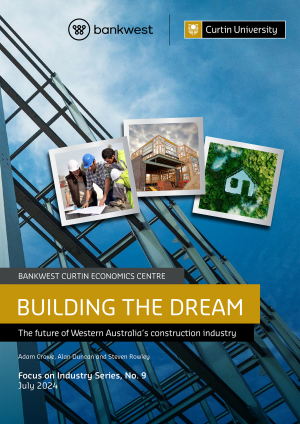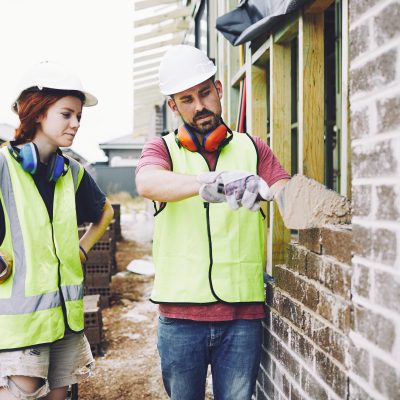Building the Dream: The future of Western Australia’s construction industry
Watch the full report launch online here, and access the presentation slides here.
Building the Dream, the ninth report in the BCEC Focus on Industry series, reveals that at current rates of dwelling completion, Western Australia will fall well short of the National Accord target of 25,000 new dwelling units per year.
The WA construction sector has faced significant challenges from skills shortages, including the loss of workers to other industries or states, fluctuating dwelling approvals, high material costs, and contracting arrangement that have placed enormous pressure on the viability of property development projects. These issues have eroded the capacity of the sector to meet unprecedented levels of housing demand.
However, should these issues be addressed, the sector has the potential to contribute significantly to the state’s economic, social and environmental progress.
The report suggests recommendations to address workforce shortages, alongside more efficient use of existing housing stock, increasing the diversity of available housing options in WA, and the sector’s contributions to net zero.
Key findings
- Shortages of construction workers in WA is driven by poor retention: Under two thirds of WA’s 2016 construction sector workforce remained working in the same sector in 2021, with a net outflow of construction workers to the mining and manufacturing sectors in WA, and to other states across the country.
- WA needs to train more apprentices and trainees: Bridging the skills gap in construction can only take place if more people are trained in building and construction trades and retained in the face of lucrative job opportunities from competing industry sectors.
- Housing diversity remains inadequate: Separate houses in WA make up 77.4 per cent of the state’s total dwelling stock, which is 7.4 percentage points higher than for the rest of Australia. The state also builds bigger. Nearly half of all houses in WA have four or more bedrooms, which again is far more than any other state.
- Existing housing stock needs to be used more efficiently: If every spare bedroom across WA was added together, it would amount to 1.45 million bedrooms. Even if every dwelling with at least one unused bedroom were to use one of those rooms for another purpose, that leaves 675,000 spare bedrooms as vacant capacity.
- A new addition of at least 1,000 social housing units is needed in WA each year: The government should press on with its program of social housing investment, but the program needs to deliver a net addition of at least 1,000 new dwelling units each year just to accommodate anticipated population growth, and to maintain the stock of social housing in WA as a share of the state’s overall housing stock.
- ‘Green’ construction is a priority if WA is to meet net zero, with the government needing to encourage investment in low and zero-carbon building processes and incentivise reduced carbon and recycling materials. Training the workforce in sustainable construction methods is also essential for meeting climate goals.






